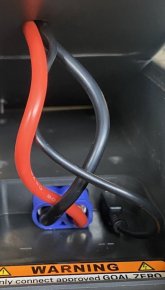goodwillhinton
New Member
- Joined
- Jun 12, 2020
- Messages
- 1
I know that this is a DIY forum but I am far from a DIYer. That said, this forum seems the most well informed place I have found to discuss solar generators.
I don't see a ton of mention about Goal Zero in this forum. Is that primarily due to cost or are there other concerns? I am considering getting a Yeti 1400 or the new replacement model that is supposed to come out this year.
I have a couple primary use cases:
I don't see a ton of mention about Goal Zero in this forum. Is that primarily due to cost or are there other concerns? I am considering getting a Yeti 1400 or the new replacement model that is supposed to come out this year.
I have a couple primary use cases:
- Home power backup for power outages
- Occasional camping trips off-grid





